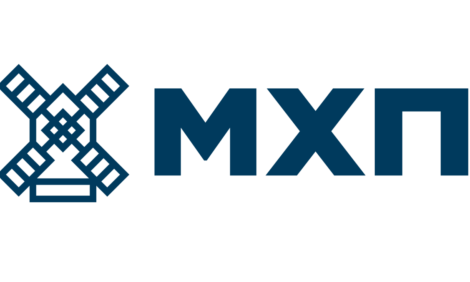



Ministers Reject Industrial Pollution 'Safety Net'
EU - A proposal, backed by Germany and Austria, to place a cap on noxious emissions spewed out by a wide range of industries, including steel, chemicals and processed food plants, is set to be voted down by EU environment ministers over concerns that the measure would be too costly.The proposed recast of the Integrated Pollution Prevention and Control (IPPC) Directive would require some 52,000 industrial operators to obtain permits from national authorities to release pollutants into the air, soil or water.
Environment ministers from the 27 EU member states are to debate broadening the scope of the directive to new industrial sectors, such as large industrial farms or waste incinerators.
Power plants and refineries with a capacity of between 20 and 50 megawatts are also to be included in the scope of the revised text (only those of 50 megawatts and above were regulated under the previous version).
But the issue is raising concerns about security of energy supply, as it would create extra costs to upgrade oil refineries.
Moreover, a proposal by the European Parliament and the European Commission that would require pollution limits to be applied as a kind of 'safety net' is raising concerns about the extra costs it would generate for industry.
"What the European Parliament is asking is to put in place limit values which cannot be exceeded, even when taking local circumstances into account," explained a diplomat involved in the negotiations.
Under the proposal, specific limit values would be defined as a kind of 'safety net' by the Commission, with the help of national experts using the so-called 'comitology' procedure.
But the diplomat said there is broad agreement that this would create too much rigidity for industry. "The safety net will probably be rejected at this stage," the diplomat said. "There is a relatively large consensus of 25 member states to say that this is not opportune," he added, explaining that only Germany and Austria are in favour.
The Parliament, however, appears to see things differently. In January, its environment committee approved the introduction of EU-wide emission limits in the proposed new directive. They said minimum emission limit values, which must not be exceeded, are needed to avoid having to resort to large-scale exemptions (EurActiv 23/01/09).
The full House will vote on the revised directive on 12 March.
Best available techniques
Consensus, however, is emerging over the strengthening of a procedure that mandates the use of the cleanest available technology in specific industrial sectors in order to limit pollution.
"One of the core elements of the Commission's proposal is to strengthen the application of Best Available Techniques (BATs) compared to current legislation. BAT refers to the most effective and available emission reduction technology, as documented in European BAT Reference Documents (BREFs)," explains the EU's Council of Ministers in a briefing note .
"The Commission believes that member states have [allowed] too much divergence from BAT in the permits they deliver to industry. The proposed recast directive therefore envisages a more prominent role for BREFs in order to reduce the scope for national authorities to deviate from BAT in permitting," it continues.
"There appears to be a consensus on the need to strengthen the role of BREFs," according to a negotiation document prepared last November by the French Presidency of the EU.
The document also suggests that the comitology procedure is rejected by most member states as it would strip them of their ability to regulate polluting emissions at national level. "A large majority of delegations also wish to keep the present procedures for preparing and adopting BREFs while strengthening their role in determining permit conditions, particularly as regards emission limit values," the document reads.
Positions
Reacting to the vote in the European Parliament's environment committee in January, the European Chemical Industry Council (Cefic) expressed concerns about setting limit values across the board.
In particular, Cefic rejected the 'one-size-fits-all' approach taken by the Commission and MEPs as difficult to apply in practice. "The environmental and health impacts [of industrial activity] depend on time, circumstances of manufacturing (physics and geography) and environmental conditions," the group said in a statement. "Therefore, measures and technological choices have to differ."
According to Cefic, the directive should take account of the best technologies available as well as the local circumstances in which they are to be applied. "The plenary vote of the European Parliament next March could tackle these issues so as to improve the workability and environmental effectiveness of the directive," Cefic said.
Background
The 1996 Directive on Integrated Pollution Prevention and Control (IPPC) introduced a permit system to prevent and limit pollution from large-scale industrial installations. Sectors covered include everything from metals, chemicals and paper to processed food, oil refineries and large-scale pig and poultry farms.
Permits are issued by the competent authorities in member states and require industrial operators to apply Best Available Techniques (BATs), considered the most cost-effective means of achieving a high level of environmental protection.
Based on the BATs, which are set at EU level, the permits include precise limit values for atmospheric pollutants that cause acid rain and smog, such as sulphur dioxide, nitrogen oxides, volatile organic compounds and dust.
Nevertheless, the current directive allows authorities to take into account the technical characteristics and location of the installation concerned, as well as local environmental conditions, when drawing up emission limits. The Commission believes this flexibility is being abused.
Indeed, although member states were given eight years (until October 2007) to ensure that their existing industrial installations are fully compliant, according to the Commission, just 50 per cent of installations in the EU have been granted permits so far.
Further Reading
| - | You can view the The IPPC Directive by clicking here. |








